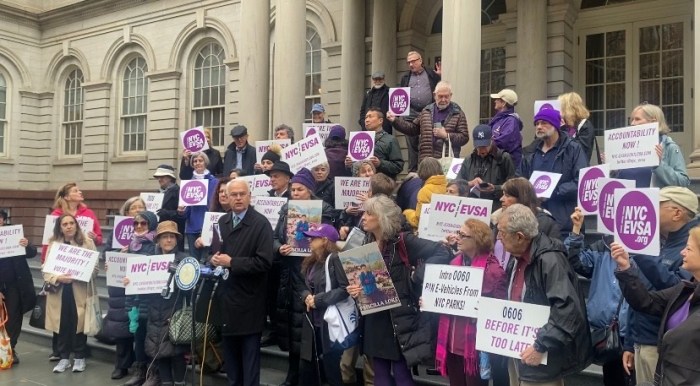By Bill Twomey
I was touring some of the side streets of Hunts Point recently with Tom Vasti and Tom Casey when we came upon a church none of us had been aware of. It was called the Hunts Point Seventh-Day Adventist Church and was on the corner of Spofford Avenue and Coster Street. It appeared to have two addresses and 700 Coster Street seemed to be the one in current use since the out-door bulletin board announcing services was adjacent thereto. The other address, just across the street from P. S. 48, was 1281 Spofford Avenue and the cornerstone of the building was on that side of the structure. The year inscribed thereon was 1915.
The land on which the church was built was part of the 24-acre Hunts Point Estates and the lot was purchased by the Church Extension Committee of the Presbytery of New York from the Douglas Robinson, Charles S. Brown Company in 1911. The property, located at the northeast corner of Coster Street and Spofford Avenue, measured 100 feet by 100 feet. It became the home of the newly established Hunts Point Presbyterian Church. The church must have been quite successful because by 1915 another section of the church facing Spofford Avenue appears to have been added to the edifice.
Only five years thereafter, early in 1920, a bronze plaque designed by sculptor Anthony de Francisco was created to honor those who served in World War I and unveiled in the church. Two parishioners had lost their lives during that conflict. Ensign John Douglas Mackenzie died in Wales and Private Gerald Mulgioti was killed at the Battle of Argonne. Bronx Judge Louis Gibbs was among the speakers as was Reverend Graham C. Hunter, pastor of the Presbyterian Church of the Covenant. He had served as pastor of the Hunts Point church prior thereto and was still very much admired and respected.
Pastor Hunter must have been an interesting man. He along with Rev. Harold Sibley Rambo, the pastor of the Home Street Presbyterian Church, wanted to test the treatment of the homeless in 1914. They feigned poverty as they dressed up as hoboes with their oldest clothes and smudged their faces before setting out to the city shelter where they would spend the night. They were well satisfied with the treatment they received at the homeless shelter and even with the quality of the food they were given. I wonder what results would be found today should a couple of young pastors duplicate that task.


































